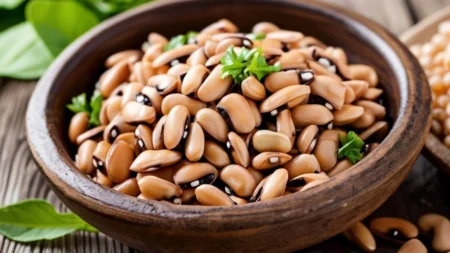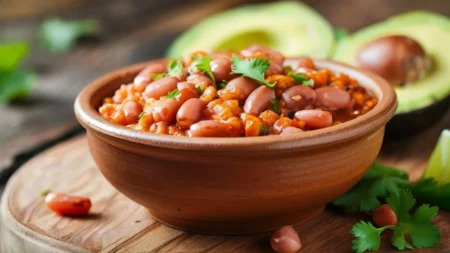Is Miso Soup Good for Weight Loss?
Key Takeaways
- Miso soup is low in calories and rich in nutrients, making it a healthy choice for weight loss.
- It contains probiotics that promote gut health and aid digestion, potentially supporting weight management.
- The high sodium content in miso can be a concern for those monitoring their salt intake.
- Homemade miso soup allows for control over ingredients, making it easier to create a low-calorie option.

What is Miso Soup?
Miso soup is a traditional Japanese soup made from a fermented soybean paste called miso. It often includes ingredients such as tofu, seaweed, green onions, and other vegetables. Miso soup is not only a staple in Japanese cuisine but has also gained popularity worldwide due to its unique flavor and potential health benefits. One question that often arises is whether miso soup can be beneficial for weight loss.
Nutritional Profile of Miso Soup
The nutritional content of miso soup can vary depending on the ingredients used and the serving size. Here’s a general overview of the nutritional composition of a standard serving (1 cup or 240 ml) of miso soup made with miso paste, tofu, and seaweed:
| Nutrient | Amount |
|---|---|
| Calories | 40 kcal |
| Protein | 3 grams |
| Carbohydrates | 6 grams |
| Fat | 1 gram |
| Fiber | 1 gram |
| Sodium | 800 mg |
As indicated, miso soup is low in calories, making it an excellent addition to a weight loss diet. However, it is essential to be mindful of its sodium content.
Benefits of Miso Soup for Weight Loss
1. Low Calorie Count
One of the primary advantages of miso soup is its low calorie count. At approximately 40 calories per cup, miso soup can be consumed in larger quantities without significantly affecting your daily caloric intake. This allows for a satisfying and nutritious option that can help curb hunger without contributing to weight gain.
2. Nutrient-Rich Ingredients
Miso soup is packed with various ingredients that contribute to its nutritional value. For example:
- Tofu: A good source of protein and healthy fats, tofu can increase satiety and help maintain muscle mass during weight loss.
- Seaweed: Rich in vitamins and minerals, seaweed adds essential nutrients while being low in calories.
- Vegetables: Adding vegetables like green onions, mushrooms, or spinach boosts the fiber and nutrient content of the soup.
These nutrient-dense ingredients can help you feel full and satisfied, potentially reducing the likelihood of snacking on unhealthy foods.
Probiotics and Gut Health
Miso is made through the fermentation of soybeans, which introduces beneficial bacteria known as probiotics. Probiotics are known to support gut health, which is essential for proper digestion and overall well-being. A healthy gut microbiome may influence weight management by improving metabolism and reducing inflammation.
Research suggests that probiotics can enhance feelings of fullness and reduce cravings, making it easier to stick to a weight loss plan.
Probiotic Benefits:
| Benefit | Effect on Weight Loss |
|---|---|
| Improved Digestion | Aids in nutrient absorption and metabolism |
| Enhanced Satiety | Reduces hunger and cravings |
| Reduced Inflammation | May prevent weight gain associated with inflammation |
Including probiotic-rich foods like miso soup in your diet can promote a healthy gut and support your weight loss journey.
Sodium Content: A Consideration
While miso soup has several health benefits, one drawback is its high sodium content. The sodium in miso paste can contribute to elevated blood pressure and may lead to water retention, which could hinder weight loss efforts.
Sodium Comparison:
| Food Item | Sodium (per serving) |
|---|---|
| Miso Soup | 800 mg |
| Canned Vegetable Soup | 700 mg |
| Instant Ramen | 1,200 mg |
To mitigate sodium intake, consider the following tips:
- Limit Portion Size: Enjoy smaller servings of miso soup to reduce overall sodium consumption.
- Use Low-Sodium Miso: Look for low-sodium or reduced-salt miso varieties to decrease sodium levels.
- Make Homemade Miso Soup: Prepare miso soup at home to control the amount of miso and additional ingredients, allowing for a healthier, low-sodium option.
How to Incorporate Miso Soup into Your Diet
1. Use as an Appetizer
Miso soup can be a satisfying starter to a meal, providing flavor and nutrients while helping to curb appetite. Enjoying a bowl before your main course may lead to reduced overall calorie consumption.
2. Add Vegetables and Proteins
Enhance the nutritional profile of miso soup by adding a variety of vegetables, such as carrots, spinach, or mushrooms, along with protein sources like tofu or edamame. This will increase the fiber content, contributing to satiety.
3. Experiment with Flavors
Customize your miso soup by experimenting with different miso types (red, white, or mixed) and adding spices or herbs for added flavor without extra calories.
Conclusion
Miso soup can be a beneficial addition to a weight loss diet due to its low calorie count, nutrient-rich ingredients, and probiotic content. However, it is essential to be mindful of its sodium levels, which can impact blood pressure and water retention. By incorporating miso soup thoughtfully and in moderation, you can enjoy its health benefits while supporting your weight loss goals.
FAQ
1. Can I eat miso soup every day while trying to lose weight?
Yes, you can include miso soup in your daily diet, but it’s important to balance it with other foods and monitor your overall sodium intake.
2. Is miso soup filling?
Miso soup can be filling, especially when combined with additional ingredients like tofu and vegetables, which increase its nutrient density.
3. How can I reduce the sodium in miso soup?
To lower sodium levels, use low-sodium miso, limit the amount of miso paste, and incorporate more vegetables.
4. Are there any health risks associated with miso soup?
The main concern is its high sodium content, which can affect blood pressure. Moderation is key, especially for individuals with hypertension.
5. What are some variations of miso soup?
You can make various versions of miso soup by adding different vegetables, proteins, and flavorings. Some common variations include adding mushrooms, seaweed, or even noodles.










